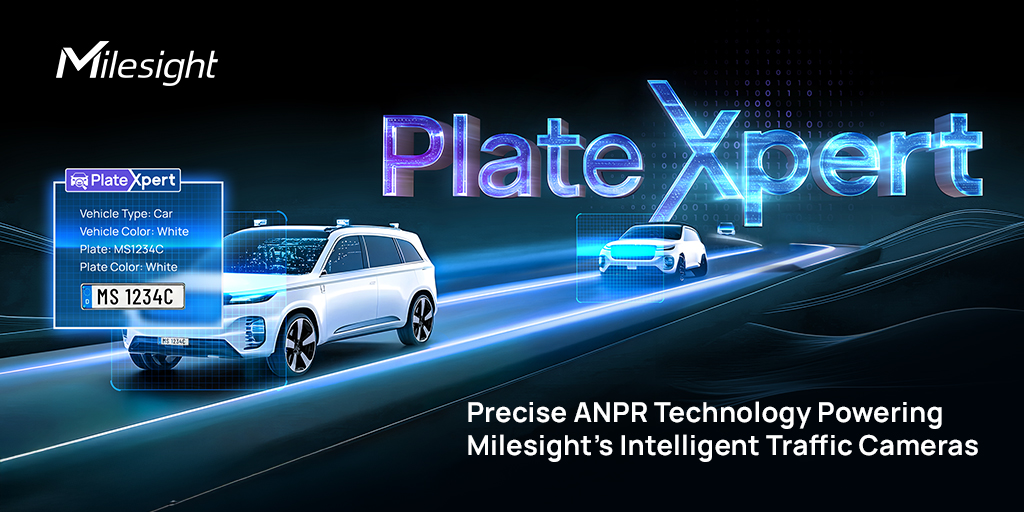
As urbanization accelerates, cities worldwide face significant challenges related to traffic congestion, pollution, and road safety. Addressing these issues requires sustainable traffic solutions that not only enhance mobility but also promote both environmental and social benefits. At Milesight, we are committed to providing innovative traffic technologies that contribute to a cleaner, safer, and more efficient future.
This article highlights how our suite of products helps tackle these challenges, demonstrating their effectiveness through real-world data and case studies.
Environmental Sustainability
1. Reducing Emissions through Traffic Flow Optimization
2. Supporting Low Emission Zone (LEZ) Enforcement through ANPR
3. Enabling Data-Driven Planning for Green Traffic Infrastructure
4. Enforcing Priority Lanes for Low-Emission Vehicles
5. Implementing Ticketless Smart Parking Systems
6. Efficient EV Charging Station Management
7. Mitigating the Environmental Impact of Illegal Parking
8. Mitigating Traffic Congestion with AI-Powered Traffic Monitoring
1. Reducing Emissions through Traffic Flow Optimization
Effective traffic management plays a crucial role in minimizing emissions from vehicles. By utilizing advanced technologies such as AI-driven vehicle detection cameras, significant reductions in CO₂ emissions can be achieved. For instance, real-time traffic monitoring through cameras allows for dynamic traffic signal adjustments based on actual vehicle flow. This technology can help reduce vehicle idle time and stop-and-go driving patterns, which are key contributors to fuel consumption and emissions. Studies have shown that the deployment of adaptive traffic signals at a single intersection can reduce CO₂ emissions by up to 40%, depending on traffic density.
Case Study: Milesight Customized Vehicle Flow Detection Enhances Urban Traffic Signal Management
Milesight partnered with PPK, a leading traffic technology provider, to enhance urban traffic signal management by incorporating real-time traffic flow data using AI-driven vehicle detection cameras. Milesight deployed the AI Road Traffic Pro Bullet Plus Camera, which provides advanced vehicle detection, classification, and traffic flow statistics. These cameras offer real-time insights into traffic conditions, enabling the dynamic adjustment of signal timings based on actual traffic flow.
The system collects real-time categorized traffic data, allowing for smart adjustments to signal durations, optimizing green light times, and reducing congestion. By integrating seamlessly with PPK's existing LoRaNet platform, Milesight's solution improved intersection efficiency and significantly reduced vehicle emissions. The real-time data collection and analysis resulted in a 21% reduction in vehicle emissions, demonstrating the impact of smart traffic management solutions on environmental sustainability and urban mobility.
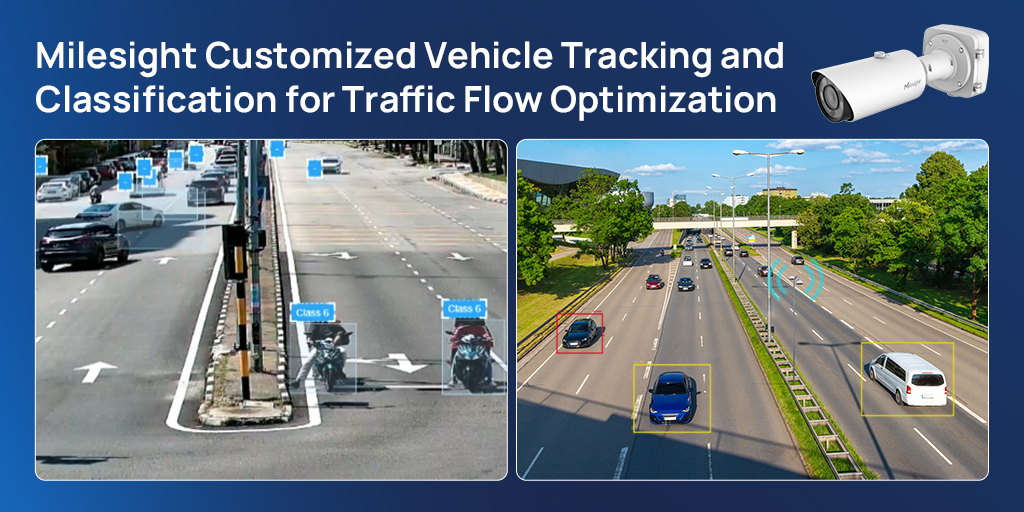
2. Supporting Low Emission Zone (LEZ) Enforcement through ANPR
As cities strive to improve air quality, many have adopted Low Emission Zones (LEZs) that restrict access based on vehicle type or emissions category. Automatic Number Plate Recognition (ANPR) technology plays a crucial role in enforcing these zones by accurately identifying vehicles that do not meet regulatory standards. High-accuracy systems such as Milesight's TrafficX dual-lens traffic cameras offer reliable detection and documentation of non-compliant vehicles, enabling more effective monitoring and enforcement.
By automatically capturing license plates and cross-referencing vehicle data with emissions databases, these systems support air quality management initiatives and promote cleaner mobility choices. In several urban deployments, Milesight's ANPR cameras have been used to monitor the movement of high-emission vehicles in sensitive areas, aligning with broader environmental and public health goals. This growing application of ANPR - from traditional traffic control to proactive environmental stewardship - demonstrates the evolving role of smart traffic technology in building greener cities.
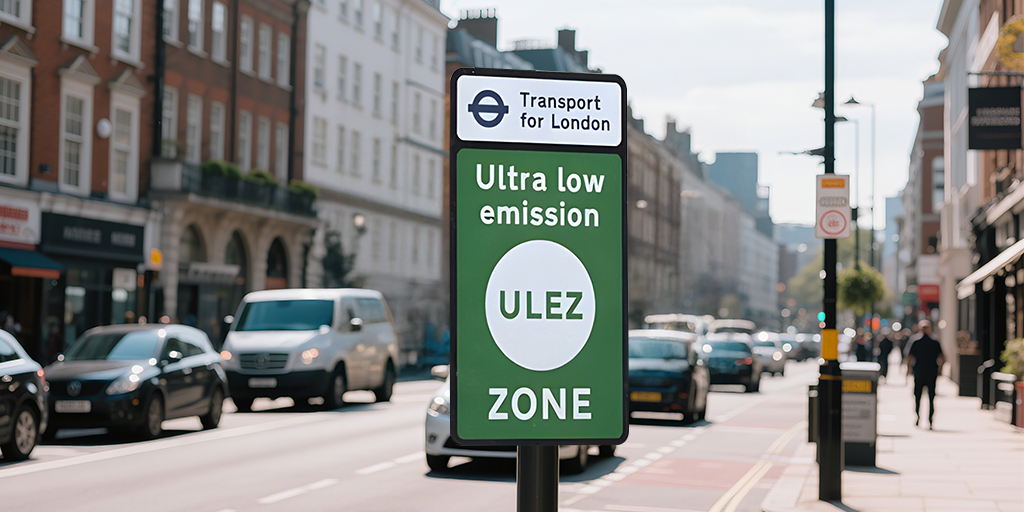
3. Enabling Data-Driven Planning for Green Traffic Infrastructure
Strategic planning of bicycle lanes, dedicated bus corridors, and electric vehicle (EV) charging stations is essential for cities aiming to reduce greenhouse gas emissions and transition to greener mobility systems. However, the effectiveness of such infrastructure depends on a deep understanding of traffic patterns and multimodal demand. Through advanced video analytics and real-time traffic monitoring, Milesight provides cities with critical data to guide sustainable traffic planning.
Milesight's AI-powered traffic cameras can identify vehicle types, count flows, and detect the presence of cyclists and buses, offering actionable insights into road usage. This helps city planners determine where protected bike lanes or public transit lanes are most needed, and how best to position EV chargers based on actual traffic behaviors. By integrating real-world data into planning decisions, municipalities can develop more efficient, safe, and environmentally responsible traffic networks.
4. Enforcing Priority Lanes for Low-Emission Vehicles
To accelerate the transition toward cleaner traffic, many cities have introduced priority lanes or expressways reserved for low-emission vehicles (LEVs), such as electric or hybrid cars. Effective enforcement of these green lanes is essential to ensure compliance and to promote behavioral change. Milesight's advanced traffic cameras support this goal by seamlessly integrating with third-party enforcement and tolling platforms.
Equipped with high-accuracy license plate recognition (LPR) and vehicle classification capabilities, Milesight cameras can identify vehicle types and emission categories in real time. This enables automatic detection of violations when non-compliant vehicles enter restricted lanes, providing reliable evidence for enforcement actions. By supporting targeted access control and incentivizing the use of eco-friendly vehicles, this solution encourages cleaner mobility and helps reduce overall traffic emissions.
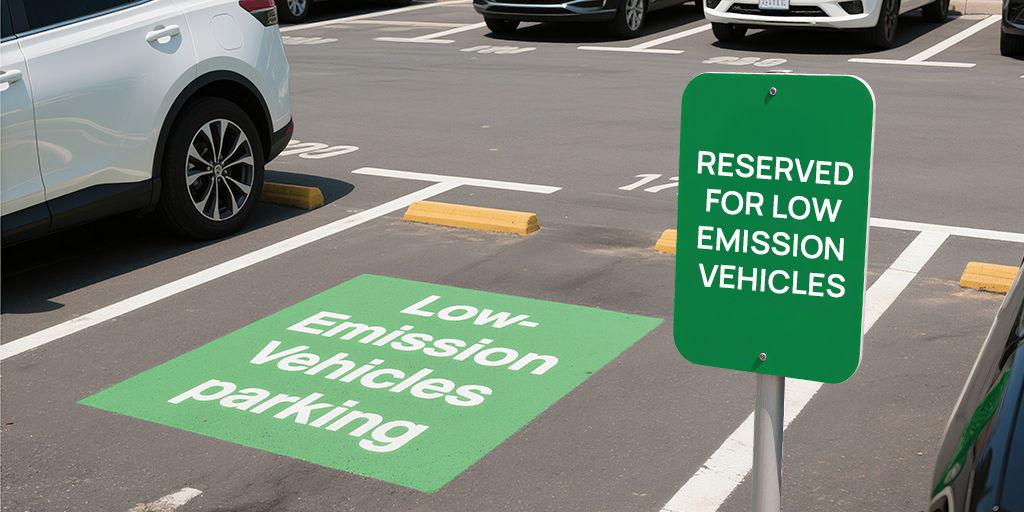
5. Implementing Ticketless Smart Parking Systems
Ticketless parking systems are redefining the way urban environments manage vehicle access and parking. By using License Plate Recognition (LPR) technology, these systems eliminate the need for printed tickets or receipts, significantly reducing paper waste and contributing to a more eco-friendly city infrastructure. Moreover, vehicles can enter and exit seamlessly without stopping at gates or kiosks, reducing congestion, idle time, and associated carbon emissions. In addition to environmental benefits, such systems enable smarter, more accurate billing and enforcement processes, supporting real-time data transmission, system integration, and remote management. As cities move towards intelligent traffic systems, ticketless solutions represent a key component in achieving greater operational efficiency and sustainability.
Case Study: Milesight Off-Grid Parking Solution in Hong Kong
In Hong Kong's public housing estates, Milesight deployed a solar-powered, 4G-enabled smart parking system that required no physical barriers or wired connectivity. The system integrated advanced ANPR for entry/exit billing and illegal parking detection using AI-powered edge cameras. Through intelligent coordination across multiple access points and support for Hong Kong’s unique license plate formats, the solution ensured billing fairness and improved enforcement efficiency. This project demonstrates how sustainable, infrastructure-free solutions can enhance urban mobility while promoting environmental responsibility.
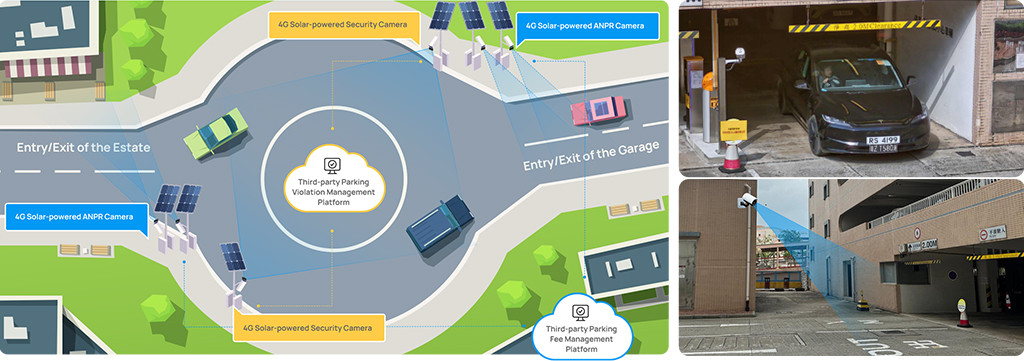
6. Efficient EV Charging Station Management
As the adoption of electric vehicles (EVs) continues to rise, the effective management of EV charging infrastructure has become crucial for sustainable urban development. Smart camera systems enable precise monitoring of EV charging spaces by tracking vehicle entry, exit, and occupancy in real time. This allows for automatic allocation of available charging bays, helping reduce queuing times and idle occupation of spots. Additionally, high-resolution imaging and AI-powered analytics ensure accurate vehicle identification and seamless integration with backend systems, facilitating better usage reporting, payment processing, and even enforcement of time limits. By optimizing space utilization and minimizing unnecessary energy waste, such intelligent systems support a more efficient and environmentally responsible charging network.
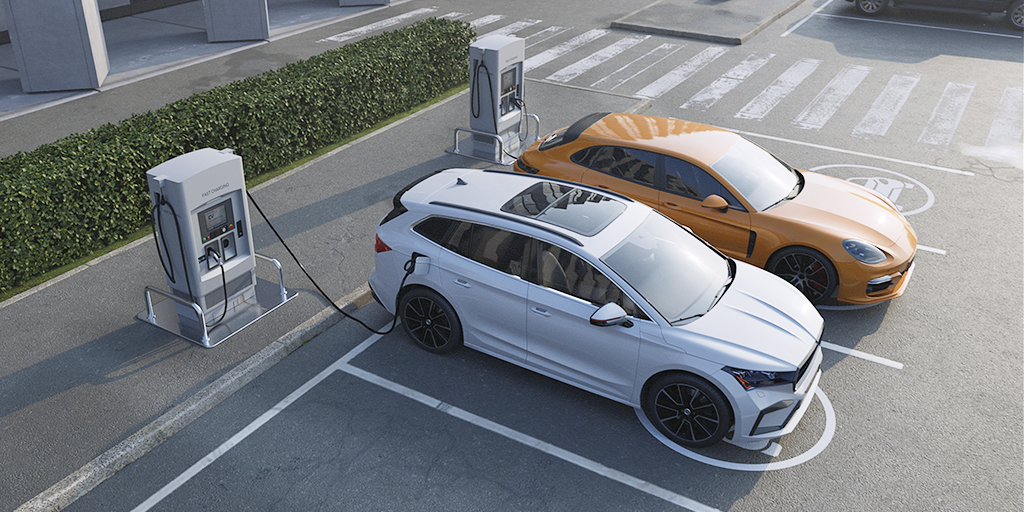
7. Mitigating the Environmental Impact of Illegal Parking
Illegal parking not only disrupts urban order but also undermines sustainable traffic efforts. Unauthorized vehicle stops can obstruct bike lanes, pedestrian crossings, and public transport routes, discouraging the use of greener mobility options and increasing localized emissions. To address this issue, Milesight's Intelligent Traffic cameras leverage AI-powered illegal parking detection to monitor restricted zones, track vehicle dwell times, and generate real-time alerts. By providing accurate, automated evidence to enforcement platforms, these systems reduce reliance on manual inspection while enhancing the effectiveness of parking regulations. This technology-driven approach helps cities preserve clean mobility infrastructure, support fair space allocation, and promote environmentally responsible behavior on the road.
8. Mitigating Traffic Congestion with AI-Powered Traffic Monitoring
Traffic congestion continues to be one of the most pressing issues in urban areas, causing not only inefficiencies but also increased emissions, longer travel times, and a negative impact on the quality of life. As cities grow, traditional traffic management systems, which often rely on static traffic lights and manual controls, are increasingly inadequate in responding to the dynamic nature of modern traffic flow. To address these challenges, real-time traffic monitoring and proactive management are essential. Milesight's AI-powered cameras offer an advanced solution, using cutting-edge technology to monitor traffic conditions continuously, detect congestion as it happens, and initiate timely responses to mitigate its effects. By integrating AI and radar sensors into the monitoring system, traffic congestion can be detected instantly, allowing cities to manage traffic flow more effectively and sustainably.
Case Study: Smart Traffic Congestion Warning System in Barcelona
In Barcelona, one of Spain's busiest traffic hubs, traffic congestion during peak hours was becoming a significant concern. To address this, the Spanish Ministry of Transport deployed a smart congestion detection and warning system, leveraging three Milesight AI Road Traffic Radar Pro Bullet Plus Cameras installed at key monitoring points throughout the city. These cameras utilize built-in radar sensors to measure vehicle speed continuously. When speeds drop below a predefined threshold, the system automatically detects traffic congestion and activates real-time alerts.
Through LoRa communication, the system sends a remote signal to electronic warning signs located 1 km away, which light up with a visual congestion warning. This immediate alert helps drivers prepare for delays ahead, promoting smoother traffic flow and improving road safety. By incorporating solar panels, the system operates off-grid, reducing energy consumption and ensuring sustainable deployment even in remote locations.
This innovative solution in Barcelona illustrates how AI-driven cameras can provide proactive congestion management, enhance driver awareness, and contribute to improved traffic flow, demonstrating Milesight's commitment to advancing smart traffic and environmental sustainability.
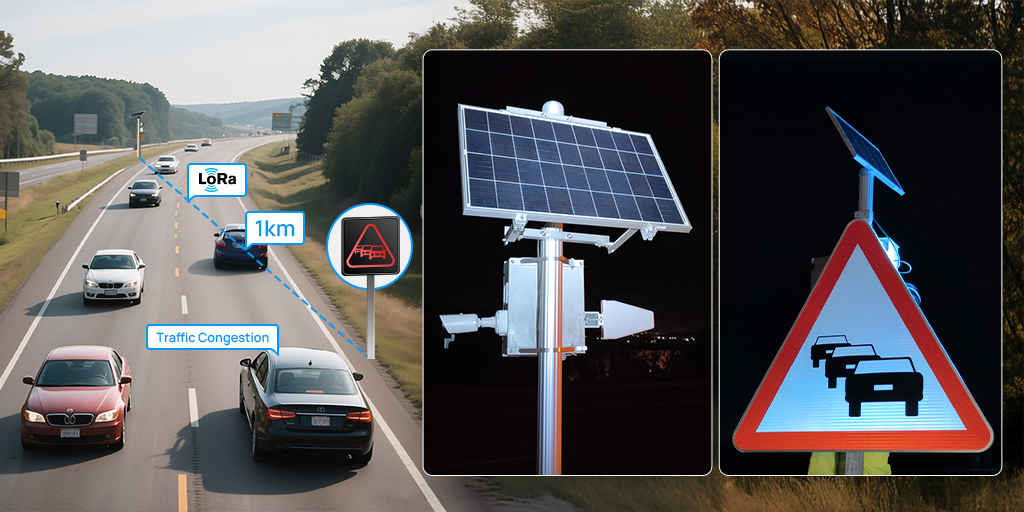
Social Sustainability
1. Improving Road Safety through Intelligent Traffic Enforcement
2. Rapid Incident Detection and Response
3. Protecting Vulnerable Road Users
4. Strengthening Public Order and Security
1. Improving Road Safety through Intelligent Traffic Enforcement
Road safety is a cornerstone of social sustainability. Beyond personal tragedies, traffic accidents also place a heavy burden on public health systems and economic productivity. Reckless behaviors such as speeding, wrong-way driving, using mobile phones while driving, and neglecting to wear seatbelts are leading contributors to accidents worldwide. According to the National Highway Traffic Safety Administration (NHTSA), distracted driving alone caused 3,275 fatalities in 2023, and speeding remains a factor in roughly one-third of all traffic deaths annually.
To effectively mitigate these risks, cities are turning to intelligent enforcement systems. Milesight’s AI-driven traffic cameras combine advanced video analytics and radar technology to detect and capture a wide range of violations in real time, including speeding, wrong-way driving, red-light running, illegal turns, and even drivers using phones or not wearing seatbelts. In regions facing elevated security threats, the same systems can assist in identifying vehicles on a watchlist, aiding law enforcement in real-time intervention.
By enabling automated, consistent, and non-intrusive enforcement, these solutions improve compliance, deter risky behavior, and ultimately help build safer and more livable communities.
2. Rapid Incident Detection and Response
Timely detection and response to traffic incidents are vital for preventing secondary accidents, minimizing disruption, and ensuring prompt emergency intervention. In high-traffic or high-speed environments, even minor delays in incident reporting can lead to greater hazards and prolonged congestion.
Milesight's edge AI traffic cameras are equipped with a rich set of intelligent video analytics that enable real-time detection of a wide range of traffic-related events. These include illegal U-turns, wrong-way driving, vehicle intrusion into restricted areas, running red lights, pedestrian falls, and other abnormal behaviors that may indicate a safety risk or ongoing incident. Once an event is detected, the system can immediately push detailed alerts—including snapshots, short video clips, and metadata - via HTTP, MQTT, or standard APIs to centralized platforms or emergency systems.
This instant data transmission empowers city operators and public safety departments to quickly assess the situation and initiate timely response measures, whether it’s dispatching personnel, issuing dynamic warnings through VMS boards, or adjusting traffic control strategies. By turning cameras into proactive eyes on the road, Milesight helps authorities enhance situational awareness, reduce response time, and ensure safer and more resilient urban mobility.
3. Protecting Vulnerable Road Users
Pedestrians and cyclists are among the most vulnerable groups in urban traffic systems. Their lack of physical protection makes them highly susceptible to severe injuries or fatalities in traffic collisions. In cities like New York, reckless driving and insufficient infrastructure design have been major contributors to pedestrian and cyclist deaths. Addressing this issue is critical for building inclusive, people-centric, and sustainable mobility ecosystems. Milesight's intelligent traffic solution offers advanced protection for these road users by enabling real-time detection, automatic warning activation, and traffic data sharing. Through smart surveillance and alert systems, authorities can not only improve immediate driver awareness but also gain insights into road safety trends to guide long-term infrastructure enhancements.
Case Study: Smart Roads, Safer Rides in Gipuzkoa
In Gipuzkoa, Spain, where cycling is both a common mode of transport and a tourism activity, accident-prone areas have led to serious cyclist injuries and fatalities. To improve safety, Milesight deployed a smart monitoring system capable of detecting cyclists in real time and triggering roadside warning signs via IoT controllers. Simultaneously, the system pushes vehicle and cyclist-related data (license plate, speed, frequency, etc.) to a backend platform, enabling authorities to analyze patterns and make informed decisions. This integrated, automated solution has enhanced road safety and reduced the risk of cycling-related accidents.
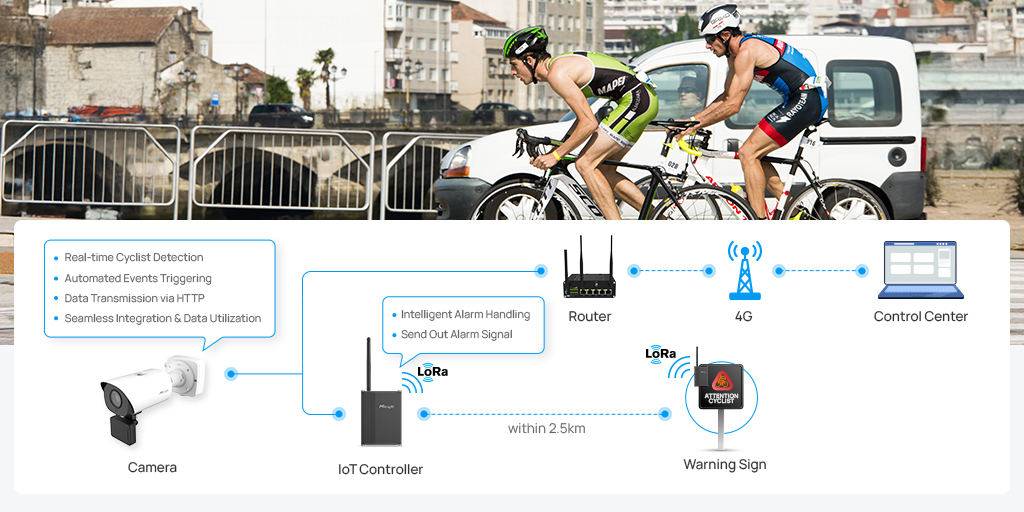
4. Strengthening Public Order and Security
Maintaining public order is fundamental to the stability and sustainability of any urban environment. It not only ensures the safety of individuals but also supports the smooth functioning of traffic systems, emergency services, and everyday urban life. As cities grow more complex, advanced technologies are playing an increasingly vital role in safeguarding public spaces.
Automated Number Plate Recognition (ANPR) is one such technology that significantly enhances public security. By automatically identifying and logging vehicle license plates, ANPR systems help authorities monitor vehicle movements in real time, identify stolen or unauthorized vehicles, and detect vehicles associated with criminal activity or public safety threats. These systems serve as digital sentinels at critical points, such as border entries, school zones, and high-traffic intersections, providing law enforcement with actionable intelligence to respond quickly and efficiently.
Milesight's AI-powered ANPR cameras combine high-accuracy PlateXpert plate recognition technology with real-time data transmission and intelligent alerts. When integrated with third-party platforms or police databases, they become powerful tools for proactive law enforcement, traffic control, and event correlation. This strengthens not only traffic management but also the broader goal of preserving order and ensuring safer, more resilient urban communities.
Empowering Cities with Intelligent & Sustainable Traffic Solutions
Milesight's intelligent traffic solutions are at the forefront of addressing the most pressing environmental and social challenges facing cities today. By optimizing traffic flow, reducing emissions, and enhancing road safety, we are contributing to the creation of more sustainable and livable urban environments. Real-world implementations, such as the 40% reduction in vehicle wait times and the 20% decrease in emissions observed in Spain, demonstrate the tangible benefits of our technologies.
Our solutions, ranging from smart parking systems to congestion detection and cyclist protection, are helping cities achieve greener mobility, improve public safety, and reduce the environmental impact of urban transport. As we continue to innovate and deploy these cutting-edge technologies, Milesight remains committed to building a more efficient, sustainable, and safer urban future for generations to come.
